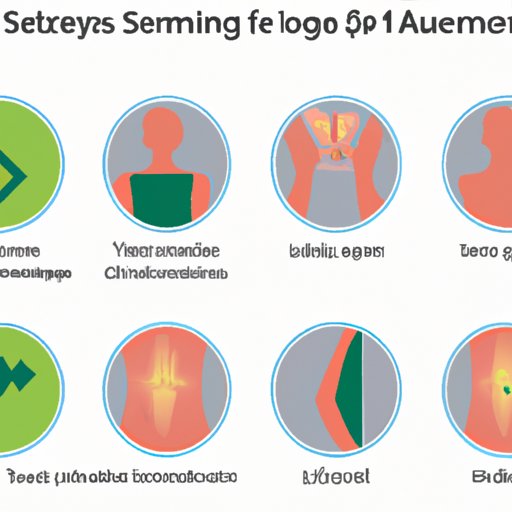
Introduction
Understanding how soon after exposure symptoms appear is crucial for effective treatment and prevention of the spread of disease. Often referred to as “the golden window,” the period of time between exposure and symptom onset can vary widely depending on the pathogen and individual immune response. This article will explore the timeline of symptoms after exposure, why early detection is so important, and what happens in the body during this crucial period.
The Golden Window: Understanding the Timeline of Symptoms After Exposure
The timeline of symptoms after exposure can vary depending on the pathogen, but understanding this timeline is crucial for diagnosis and treatment. It’s known as the “golden window” because, within a certain period of time, symptoms may be more easily treated. For instance, if the flu is caught within the first 48 hours, antiviral medication can be prescribed to shorten the duration and severity of symptoms. After that window, however, the virus has likely replicated and medications become less effective.
The timeline of symptoms after exposure can range from hours to weeks, depending on the pathogen and the individual response. For example, symptoms of the common cold may appear within 1-3 days, while symptoms of Lyme disease may not appear for several weeks to months after a tick bite.
Clock is Ticking: How Soon You Should Expect Symptoms After Exposure
The time between exposure to a pathogen and symptom onset can vary depending on a number of factors. The amount of the pathogen that was present during exposure, as well as the individual’s immune response, can both impact symptom onset. In some cases, symptoms may appear within hours or days of exposure, such as in cases of food poisoning or a severe allergic reaction. In other cases, symptoms may not appear until weeks or even months later.
It is important to have a general sense of when symptoms might appear after exposure in order to be vigilant for early signs. For example, if someone has been in close contact with someone who has COVID-19, they should be monitoring for symptoms such as fever, cough, or loss of taste or smell for at least 14 days after exposure.
Don’t Delay: The Importance of Recognizing Early Symptoms After Exposure
Early recognition of symptoms is crucial for effective treatment and prevention of spread. If symptoms are ignored or left untreated, they may become more severe and can lead to complications. For instance, someone who contracts strep throat but doesn’t seek treatment may develop complications such as rheumatic fever or kidney damage. The spread of disease to others can also be prevented by early recognition and treatment. For example, if someone with the flu receives antiviral medication early on, they are less likely to spread the virus to others.
Breaking Down the Timeline: What Happens in Your Body After Exposure
After exposure to a pathogen, a number of stages occur in the body that can impact symptom onset and severity. The initial stage involves the pathogen invading the body and establishing an infection. From there, the pathogen replicates and can spread throughout the body, causing more severe symptoms. The immune system also responds to the infection, which can produce symptoms such as fever and inflammation. The timing of these stages can impact symptom onset and severity. For instance, someone with a weaker immune system may take longer to develop symptoms than someone with a stronger immune system.
Early Detection: Identifying Symptoms Within the First Few Days After Exposure
Catching symptoms early is especially important for effective treatment and prevention of spread. Some common signs to look out for include fever, cough, shortness of breath, fatigue, and body aches. If someone has reason to suspect they may have been exposed to a pathogen, they should be monitoring for these symptoms and seeking medical attention if they appear. It’s important to note that some symptoms may be mild at first and become more severe over time.
The Race Against Time: How Quickly Symptoms Can Develop After Exposure
While most pathogens have a fairly predictable timeline of symptoms, some can cause very rapid symptom onset. For example, anthrax can cause symptoms within hours of exposure, while botulism can cause symptoms within 6-24 hours. Rapid onset of symptoms requires even more prompt recognition and treatment in order to prevent complications and spread of disease.
Conclusion
Understanding how soon after exposure symptoms appear is crucial for effective treatment and prevention of the spread of disease. By being vigilant for early signs and seeking medical attention promptly, individuals can help prevent complications and reduce the spread of disease to others.





